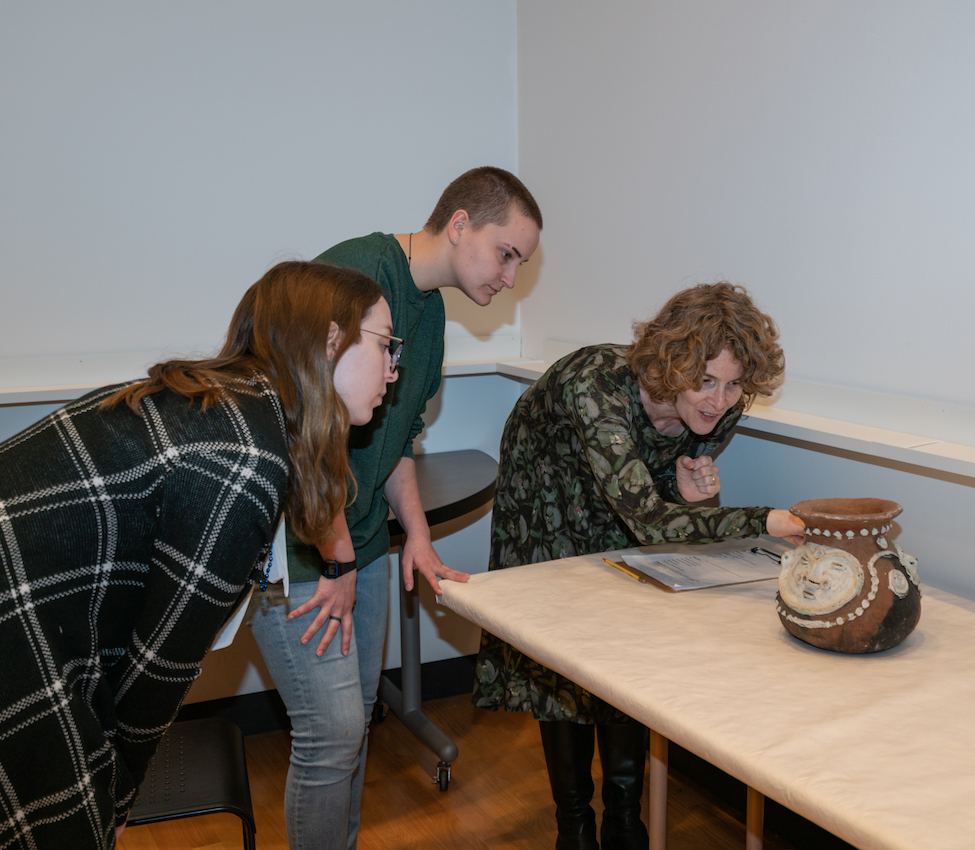INTRODUCTION
This digital exhibition brings together the research and final presentations of students in our spring 2020 “Anthropology in/of Museums” course. This upper-level seminar considers “the museum” as an object of ethnographic inquiry, examining it as a social institution embedded in a broader field of cultural heritage that is perpetually under negotiation.
A through-line of the course is object-based research. This is an anthropological method and a theoretical orientation to the field. We consider how museums and their objects/collections are connected to the origins of anthropology, and think critically about what it means to preserve, collect, perform, and exhibit “culture.” Collaborating with the Mount Holyoke College Art Museum, students were invited to select an object from the Museum’s Melanesian collections. This opportunity offered a productive synergy between the Museum and the pedagogical goals of the course: the Museum is seeking to learn more about the objects in this collection; and this collection comes from a region of the world that has been significant in the history of anthropology. Melanesia, a subregion of islands in the Pacific Ocean, is where ideas about fieldwork were first developed, and the site of rigorous analysis of value, exchange, and alternative economies; materiality; and the interanimation of people, their places, their objects, and their cosmologies.
We had instruction from Leslie Fields (College Archives) and Julie Adamo (Anthropology subject librarian); and before our COVID-19 transition to online teaching/learning, students visited both the Skinner and Art Museums; had a behind the scenes tour of the Museum collections; and “met” their objects in the Carson Teaching Gallery. They were instructed in close-looking as well as the method of chaîne opératoire, a materials-oriented research method to understanding the circumstances of production. Building on readings and themes discussed throughout the course, students were then invited to start with the object—rather than a question or a text—and conduct independently-directed, open-ended research that might contribute to museum records and/or plans for conservation, education, and/or exhibition.
These short presentations are a testament to students’ creativity, critical thinking, and deep engagement with multi-modal and interdisciplinary learning. We’d like to thank the Museum staff for facilitating and collaborating with us!
Sabra Thorner
Assistant Professor of Anthropology
 Yeji Seo ’20
Yeji Seo ’20
Bark belt, 20th century
New Guinea, Melanesian
Bark and pigment
Gift of Cedric H. Marks
MH 1964.8.V.X
 Sal Cosmedy ’20
Sal Cosmedy ’20
Boat carving, 20th century
New Guinea, Melanesia
Wood and pigment
Gift of Professor Marian Hayes (Class of 1925)
MH 1969.25.V.L

 GIVE
GIVE

